You are currently browsing the category archive for the ‘drawings’ category.




All in my 5×7 sketchbook in graphite.
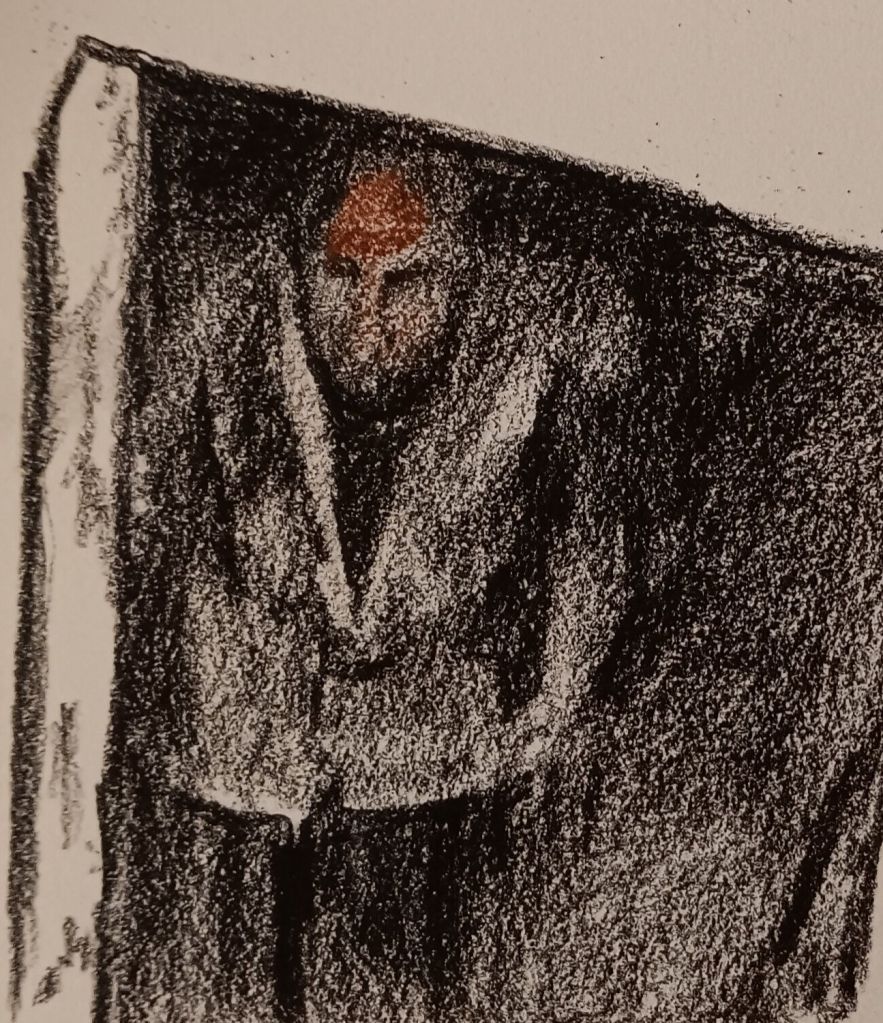
I have been listening to people’s stories from Israel and Palestine (This American Life has had several lately) and looking at photos of the devastation. In one photo, the figure of a man standing in a doorway of a shattered building (his home?) seems so small, but also immovable in both dignity and grief. I was hearing the same in the stories, all the stories. I kept coming back to that photo until I realized that he was the person I needed to draw.
The drawing is conté crayon, about 4″ x 3″. The photo is below. I have seen it with various captions on different websites, usually with some editorial slant, but all agree that the photo is of Khan Yunis, in the southern Gaza Strip, and shows the result of an airstrike by the Israel Defense Force on December 6, 2023.
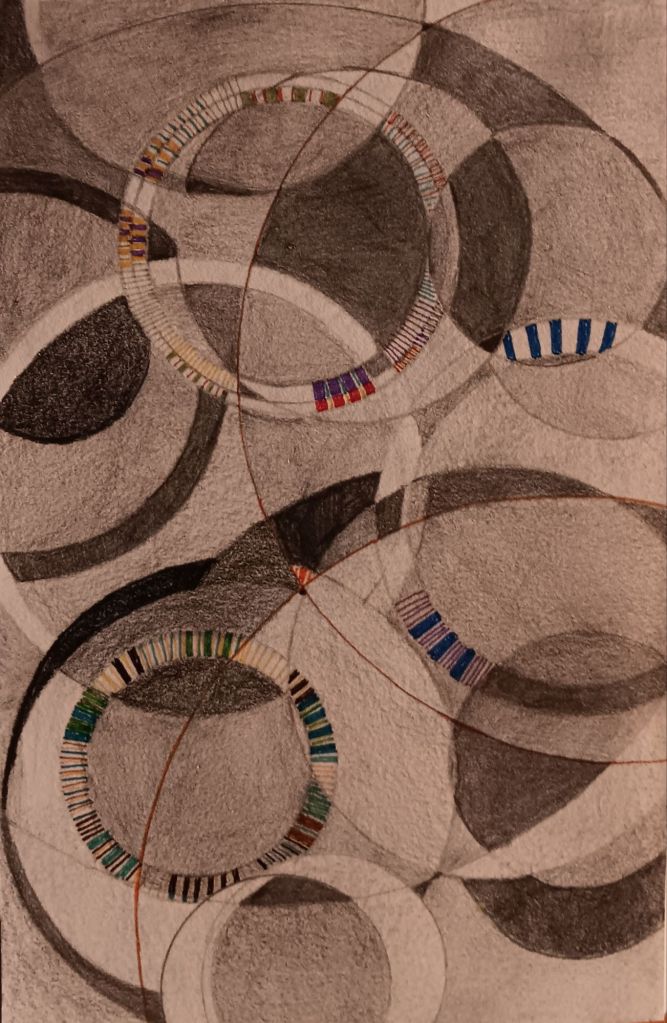
What I’ve been drawing for the past two weeks. One small sketchbook page of pencil and marker doesn’t seem like much, but I’ve been doing it every day–sometimes for a long stretch, sometimes for only five or 10 minutes–and making art a steady part of my life even as job, family, and household fill my time, is an effort and an anchor.
Also, there’s a story with this one. The image came into my mind of dark, receding layers of concentric and overlapping circles, and some brighter rings in the foreground. As is often the case, I had no idea why, or what it might come to mean, but I was intrigued. “Huh,” I thought. “I’ll have to draw that one of these days,” and I went on with whatever I was doing.
Well, I had just given a sermon on the difference between our popular conception of some people’s being geniuses and the much more liberating, fruit-bearing idea of occasionally having a genius, like a spirit that visits. Elizabeth Gilbert writes about this in her book Big Magic, and as soon as I read it I was captivated, or rather, freed, by it. In the sermon, I talked about ways we might invite a genius to visit us, and keep it around when it does, and the most important one was to heed what it says.
So I heard myself not-heeding. Telling the genius this wasn’t a very convenient time. And it wasn’t because I was performing open-heart surgery or driving to an urgent appointment. I just didn’t feel like sitting down and making art. All the little habits of fear and hesitation had me shooing the genius out the door. But thanks to Elizabeth Gilbert, and giving the sermon, and having so many people respond to it, this time I noticed myself saying no and how diametrically that contradicted the advice I had just given. I pushed aside my shabby excuses, got a compass out of the “Sharp things!” drawer in the art room, and tried to put on paper what the genius had shown me in my mind.
Until I said “Maybe later” to the genius, and heard myself saying it, and heard the contradiction, I didn’t realize how habitually I say “Not now.” How I am, in fact, in the habit of saying “no” rather than “yes” to the genii who, by my great good fortune, knock on my door pretty often. I am really excited to discover what might happen when I start to welcome them in.
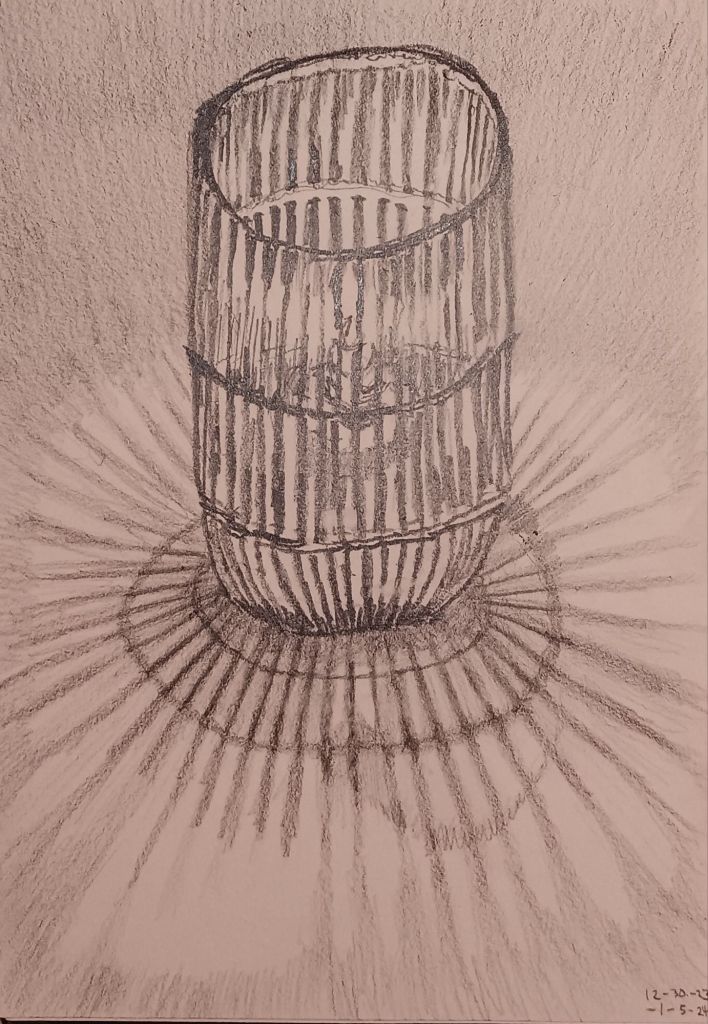
The nice thing about having my sketchbook with me everywhere is that when we’re waiting for the food to arrive at a restaurant, I can draw what’s on the table. When we were in Solvang, we went to dinner at a place that had these nice oil lamps on the tables, with their irresistible patterns of shadow and light.
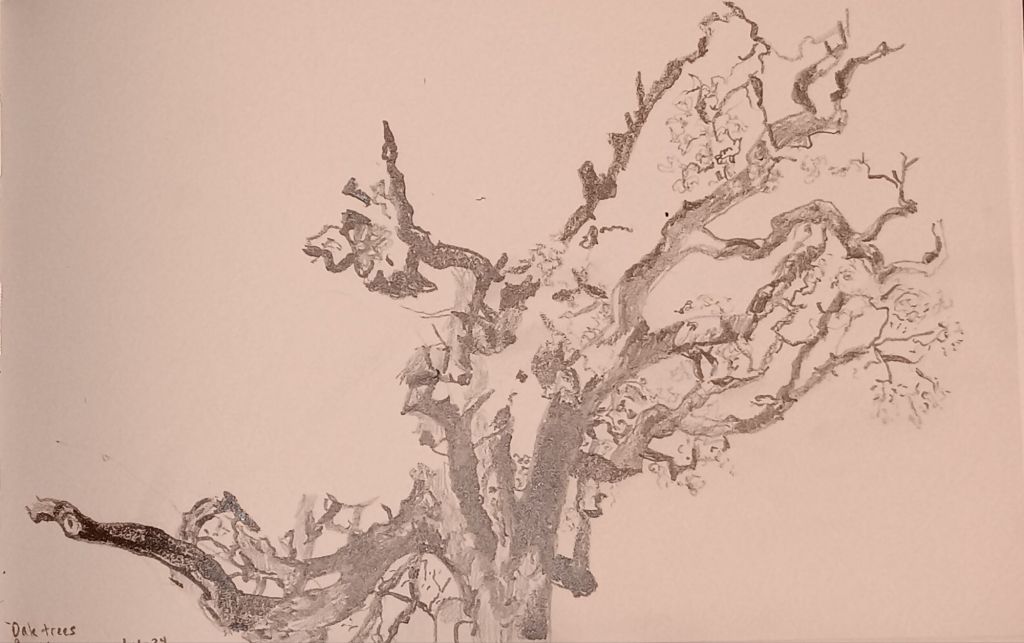
California’s oak trees always say “draw me,” and I am usually too intimidated to heed them. I like this drawing, though. It’s an exercise in not being too specific–just following the general patterns of the tree. That’s really difficult for me for a variety of reasons. I don’t know if I’ll finish it, but I’ve returned to it for the past few days, having gotten a start on it at the winery where it grows while we were still in SoCal.
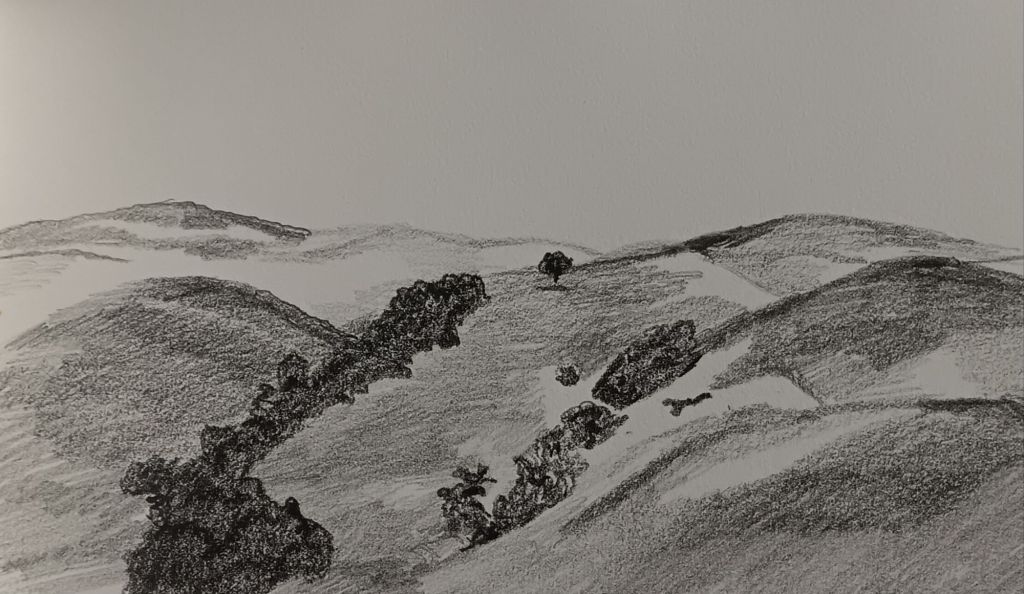
We went south for a few days after Christmas to meet up with friends and hike in the beautiful Santa Ynez Mountains. The route took us down through the Salinas Valley. At one point a patch of sun on the otherwise clouded hills was so striking that I considered stopping to take a picture, or asking Joy to take one out the window as I drove, because I knew I’d want to draw it later. The moment passed, unrecorded except in my mind, and when we got to our destination, I went looking on the internet for a reference photo. I really wanted it to be of these same hills. Nothing quite captured the quiet drama of that illumination–moral: take the photo when it strikes you–but this one was pretty. Thank you, Shutterstock (photo 1055815059).

That’s the tentative title for what might end up being a painting. I envision this writing scratched in paint or ink so that an under-layer of paint or ink shows through, but some kind of dry medium might also work, or maybe colored pencil over an ink wash–the layers are important. I have tried it in pencil before, when I first got the idea seven years ago. I know it was that long ago because we were living in Oaxaca then. I didn’t have the idea of making a portrait out of scribbled-out, obscured words at that time. I know I have that sketch somewhere and I’m curious what my earlier idea was.
The legible text tells a story. The most important points are here, but it will be longer and go into more detail in the next version. There’s more I want to write, but as this is quite small, the size of my sketchbook, I ran out of paper before I ran out of things to say.
This whole project makes me think a lot about my friend Karen Schiff, who is also an artist (check out her great drawings and writing about art here).

I didn’t realize until after I’d drawn this that the location has a name very similar to a name in our family, the branch that came to the US from Lebanon.
There’s no avoiding it: as soon as I start posting drawings like this and the previous one, some people will evaluate them politically. Am I showing too many images of ___ and not enough of ___? What do I mean by giving attention to ___ instead of ___? Etc.
I can’t say these aren’t political. All I can say is that allowing my heart to spend time with people who have suffered because of this conflict feels like it is the right thing to do. And if anyone is counting beans, they should be aware that I’m not posting everything I’m drawing. Some feel too raw and some are just crappy drawings, but they’re helping my heart stay with the suffering.

With this drawing, I was trying to make every mark a meditation and a reminder to myself that within these white plastic bags are parts of the bodies of people who were recently alive and who died by violence. Every mark a breath, taking in the reality of things we can’t see.
Content warning: image of a grief-stricken child
This is as done as it’s going to get–I think I’m better off starting from scratch if I want to improve it. But the making of it has been painful and beneficial. I am trying, over and over, to embrace my art as a spiritual practice and only secondarily concern myself with the physical artifact that results.
The subject is a child whose name I don’t know, who came to this Gaza hospital a couple of weeks ago when the refugee camp that is her home was bombed. Next to her gaze, and the so-adult expressiveness of her hands, it’s the little details of normal life that wring my heart (as normal as life in a refugee camp can be said to be). Someone helped pull that Minnie Mouse shirt over her head. Someone pulled her hair into a ponytail with that white elastic. Is that person’s blood on her shirt now? Is that person alive? Is she alive?–an ambulance just outside the hospital has been bombed since, and the lack of fuel is turning Al-Shifa into a “mass grave,” although a rumor that a group of Israeli doctors actually called for the hospital to be bombed seems to be sheer invention. (I found reports about it, but searching for the “Israeli news site” they claim to be citing, and the name of the group they claim is doing this, turns up nothing. “The truth is the first casualty of war”; read with care.) 11/7/23, ETA: I saw the same story with full citations here, thanks to Jewish Voice for Peace. At this writing, over 90 doctors have signed the letter. Utterly sickening.
I will never know her story. I just know that I hope neither I nor anyone I love ever has to look upon whatever horror her eyes are seeing.

Looking at art in museums, and also making a drawing of a building in SketchbookX, where I can’t make very precise marks, I noticed how little it takes to show light and shadow. So when we say by this patio at Palacio Viana, Córdoba, I tried to put in just enough to show the light.

I am now sitting in the park Miradoura de Sāo Pedro de Alcántara, in Lisbóa, looking out to the castle and hillsides of buildings. For music, there’s a breeze, the clink of coffee cups behind me, and a man with an acoustic guitar and a beautiful, unadorned voice playing bossa nova. I might get out my sketchbook and draw the light on the buildings, or I might just keep reading and making notes on How to Be an Artist, by Jerry Saltz, for my grad school course (The Arts as Leadership) that starts next month. It’s all good. More than good.
Edited to add this, the view from here, since I did do some drawing.


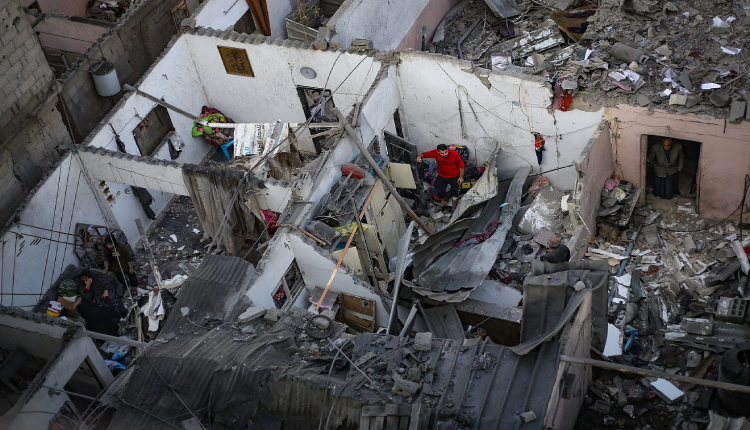

Recent comments